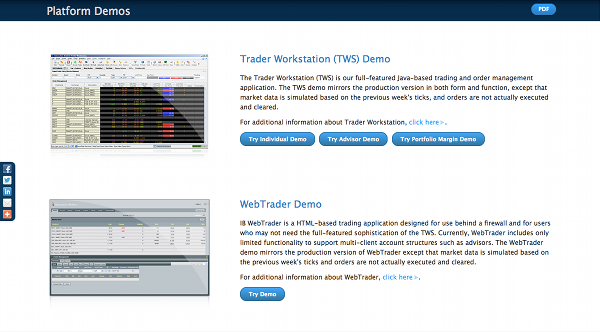SelfStudy Plan for Becoming a Quantitative Trader Part I
Post on: 17 Июль, 2015 No Comment

By Michael Halls-Moore on November 19th, 2013
Quantitative trader roles within large quant funds are often perceived to be one of the most prestigious and lucrative positions in the quantitative finance employment landscape. Trading careers in a parent fund are often seen as a springboard towards eventually allowing one to form their own fund, with an initial capital allocation from the parent employer and a list of early investors to bring on board.
Competition for quantitative trading positions is intense and thus a significant investment of time and effort is necessary to obtain a career in quant trading. In this article I will outline the common career paths, routes in to the field, the required background and a self-study plan to help both retail traders and would-be professionals gain skills in quantitative trading.
Setting Expectations
Before we delve into the lists of textbooks and other resources, I will attempt to set some expectations about what the role involves. Quantitative trading research is much more closely aligned with scientific hypothesis testing and academic rigour than the usual perception of investment bank traders and the associated bravado. There is very little (or non-existent) discretionary input when carrying out quantitative trading as the processes are almost universally automated.
The scientific method and hypothesis testing are highly-valued processes within the quant finance community and as such anybody wishing to enter the field will need to have been trained in scientific methodology. This often, but not exclusively, means training to a doctoral research level — usually via having taken a PhD or graduate level Masters in a quantitative field. Although one can break into quantitative trading at a professional level via alternate means, it is not common.
The skills required by a sophisticated quantitative trading researcher are diverse. An extensive background in mathematics. probability and statistical testing provide the quantitative base on which to build. An understanding of the components of quantitative trading is essential, including forecasting, signal generation, backtesting, data cleansing, portfolio management and execution methods. More advanced knowledge is required for time series analysis, statistical/machine learning (including non-linear methods), optimisation and exchange/market microstructure. Coupled with this is a good knowledge of programming, including how to take academic models and implement them rapidly.
This is a significant apprenticeship and should not be entered into lightly. It is often said that it takes 5-10 years to learn sufficient material to be consistently profitable at quantitative trading in a professional firm. However the rewards are significant. It is a highly intellectual environment with a very smart peer group. It will provide continuous challenges at a fast pace. It is extremely well remunerated and provides many career options, including the ability to become an entrepreneur by starting your own fund after demonstrating a long-term track record.
Necessary Background
It is common to consider a career in quantitative finance (and ultimately quantitative trading research) while studying on a numerate undergraduate degree or within a specialised technical doctorate. However, the following advice is applicable to those who may wish to transition into a quant trading career from another, albeit with the caveat that it will take somewhat longer and will involve extensive networking and a lot of self-study.
At the most basic level, professional quantitative trading research requires a solid understanding of mathematics and statistical hypothesis testing. The usual suspects of multivariate calculus, linear algebra and probability theory are all required. A good class-mark in an undergraduate course of mathematics or physics from a well-regarded school will usually provide you with the necessary background.
If you do not have a background in mathematics or physics then I would suggest that you should pursue a degree course from a top school in one of those fields. You will be competing with individuals who do have such knowledge and thus it will be highly challenging to gain a position at a fund without some definitive academic credentials.
In addition to having a solid mathematical understanding it is necessary to be adept at implementation of models, via computer programming. The common choices of modelling languages these days include R . the open-source statistical language; Python . with its extensive data analysis libraries; or MatLab . Gaining extensive familiarity with one of these packages is a necessary prerequisite to becoming a quantitative trader. If you have an extensive background in computer programming, you may wish to consider gaining entry into a fund via the Quantitative Developer route .
The final major skill needed by quantitative trading researchers is that of being able to objectively interpret new research and then implement it rapidly. This is a skill learned via doctoral training and one of the reasons why PhD candidates from top schools are often the first to be picked for quantitative trading positions. Gaining a PhD in one of the following areas (particularly machine learning or optimisation) is a good way into a sophisticated quant fund.
Introductory Quantitative Trading
Quantitative trading has exploded in popularity both in the professional fund space and at the retail level. It is, of course, the main topic of this website! I’ve written quite a few articles on how to begin introductory quantitative/algorithmic trading. The following will provide you with a brief overview of the field:
For a deeper introduction you should pick up the following texts by the hedge fund manager Ernie Chan, which include significant implementation detail on quant trading strategies. They are pitched at the sophisticated retail investor, but the trading methodologies and risk management techniques are sound and carry over into the professional fund space:
- Quantitative Trading: How to Build Your Own Algorithmic Trading Business — Ernie Chan
- Algorithmic Trading: Winning Strategies and Their Rationale — Ernie Chan
If you wish to gain more insight into the implementation details of quant trading strategies (particularly at the retail level) take a look at the quant trading articles on this site.
Econometrics/Time Series Analysis
Fundamentally the majority of quantitative trading is about time series analysis. This predominently includes asset price series as a function of time, but might include derivative series in some form. Thus time series analysis is an essential topic for the quantitative trading researcher. I’ve written about how to get started in the article on Top 10 Essential Resources for Learning Financial Econometrics . That article includes basic guides to probability and beginning programming in R, which we’ll discuss in more detail in the second part of this article series.
The three fundamental texts that I recommend to get started in econometrics and time series analysis are:

If you wish to read more about each book and how it can help you, I suggest taking a look at my article on econometrics resources .
Recently I came across a fantastic resource called OTexts . which provides open access textbooks. The following book is especially useful for forecasting:
- Forecasting: Principles and Practice by Hyndman and Athanasopoulos — This free book is an excellent way to begin learning about statistical forecasting via the R programming environment. It covers simple and multivariate regression, exponential smoothing and ARIMA techniques as well as more advanced forecasting models. The book is originally pitched at business/commerce degrees but is sufficiently technical to be of interest to beginning quants.
With the basics of time series under your belt the next step is to begin studying statistical/machine learning techniques, which are the current state of the art within quantitative finance.
Intermediate Statistical/Machine Learning
Modern quantitative trading research relies on extensive statistical learning techniques. Up until relatively recently, the only place to learn such techniques as applied to quantitative finance was in the literature. Thankfully well-established textbooks now exist which bridge the gap between theory and practice. It is the next logical follow-on from econometrics and time series forecasting techniques although there is significant overlap in the two areas.
The recommended way to begin understanding statistical/machine learning is to study the following two books (with overlapping authors):
- An Introduction to Statistical Learning: with Applications in R by James, et al — This text provides a great introduction to modern statistical learning techniques. It is aimed at the practitioner, rather than the academic statistician, so will be of use to those coming from a financial background with minimal machine learning experience. It makes use of R for all of its examples and as such is easy to implement. It is recommended to read this prior to reading the subsequent book below.
- The Elements of Statistical Learning: Data Mining, Inference, and Prediction by Hastie, et al — Affectionately known as ESL within the statistical community, this book is a fantastic follow-on to the recently released ISLstatweb.stanford.edu/
tibs/ElemStatLearn/ )
A particularly useful (and free!) set of web courses on Machine Learning/AI are provided by Coursera :
- Machine Learning by Andrew Ng — This course covers the basics of the methods I have briefly mentioned above. It has received high praise from individuals who have participated. It is probably best watched as a companion to reading ISL or ESL given above.
- Neural Networks for Machine Learning by Geoffrey Hinton — This course focuses primarily on neural networks, which have a long history of association with quantitative finance. If you wish to specifically concentrate on this area, then this course is worth taking a look at, in conjunction with a solid textbook on the area.
Next Steps
In the next article in the series we will be considering the topics of non-linear machine learning, mathematical optimisation, exchanges/market microstructure, portfolio theory and computer programming — all necessary areas of study for a prospective quantitative trading researcher.
Michael Halls-Moore
Mike is the founder of QuantStart and has been involved in the quantitative finance industry for the last five years, primarily as a quant developer and later as a quant trader consulting for hedge funds.














